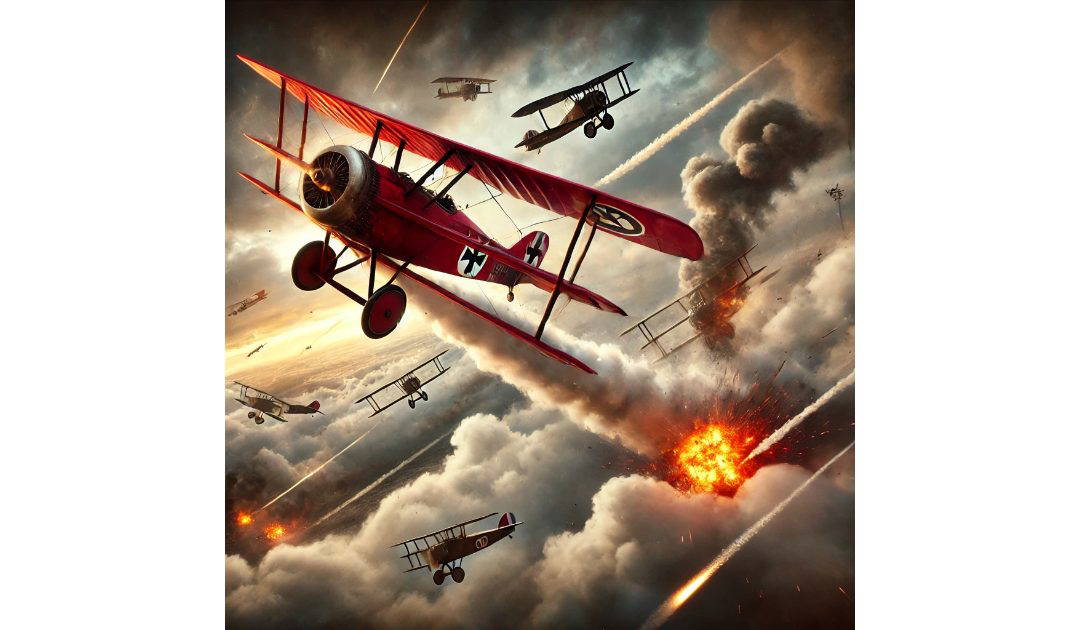On the 21st of April, 1918, Manfred Von Richthofen, “The Red Baron”, was shot down a killed. Manfred von Richthofen, also famously known as the Red Baron, was a legendary fighter pilot during World War I and is often considered the ace-of-aces of the war with 80 confirmed air combat victories. Born on the 2nd of May, 1892, in Breslau, Silesia, then part of the German Empire (now Wrocław, Poland), Richthofen hailed from a wealthy and aristocratic family. His father, Albrecht Philipp Carl Julius Freiherr von Richthofen, was a Prussian nobleman, which allowed Manfred to grow up in a privileged environment filled with the opportunities to pursue education and hobbies that suited his aristocratic lifestyle.
Initially, Richthofen embarked on a military career in the cavalry, a traditional choice for young men of noble descent. He joined the Uhlan Cavalry Regiment in April 1911. However, as the nature of warfare evolved and trench warfare rendered cavalry units less effective, Richthofen’s role in the army became increasingly obsolete. Seeking more excitement and a greater contribution to the war effort, Richthofen transferred to the Imperial German Army Air Service in 1915, where his aviation career began.
Richthofen’s early experiences in aviation were as an observer in reconnaissance missions, sitting in the back seat of a two-seater aircraft. However, he soon pursued pilot training and became a fighter pilot. He flew several missions before catching the attention of Oswald Boelcke, a pioneering German fighter pilot. Boelcke, recognising Richthofen’s potential, invited him to join his elite unit, Jagdstaffel 2, commonly known as Jasta 2.
Richthofen quickly excelled under Boelcke’s mentorship. He followed Boelcke’s Dicta, a set of tactical rules for aerial combat, which emphasised strategic thinking, discipline, and situational awareness. Richthofen’s prowess as a pilot and his strategic acumen made him a formidable opponent in the skies.
In September 1916, he achieved his first aerial victory, shooting down a British aircraft. This marked the beginning of his meteoric rise to fame. As his victory count grew, he began to distinguish his aircraft with red paint, earning him the nickname “Red Baron” from both his allies and adversaries. The bright red aircraft became a symbol of fear and respect among the Allied forces.
Richthofen was not only famous for his skills in the air but also for his leadership abilities. In January 1917, he was given command of his own fighter wing, Jagdgeschwader 1, often referred to as “The Flying Circus” due to its colourful aircraft and frequent movements along the Western Front. Under his command, the unit became one of the most effective and feared in the war.
Despite his success, Richthofen faced many dangers. On 6 July 1917, he was seriously injured during a dogfight, sustaining a head wound that left him with recurring headaches and depression. Nevertheless, he returned to flying duty, albeit against medical advice.
Richthofen’s career ended on the 21st of April, 1918, when he was shot down and killed near Vaux-sur-Somme, France. There has been much debate about who fired the fatal shot. Australian ground troops and Canadian pilot Captain Arthur Roy Brown have both been credited at different times, but the issue remains unresolved.
Richthofen’s death was a significant loss to the German forces, and he was posthumously celebrated as a hero and a symbol of chivalry in warfare. Even his enemies respected him to such an extent that he was given a full military burial by the Allies.
Manfred von Richthofen’s legacy endures as one of the most famous fighter pilots in history. The Red Baron remains a cultural icon, representing the thrilling and dangerous world of aerial combat during World War I, and his story continues to capture the imagination of people worldwide.

